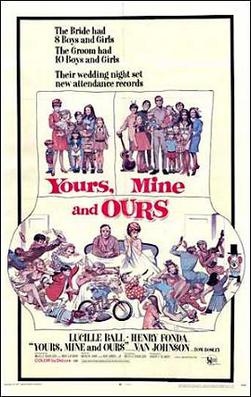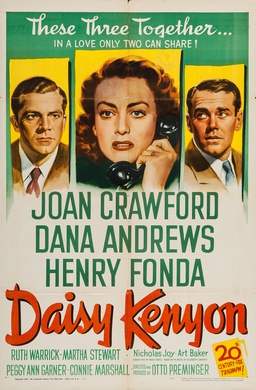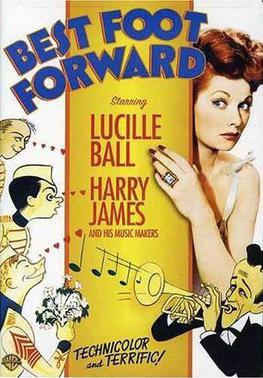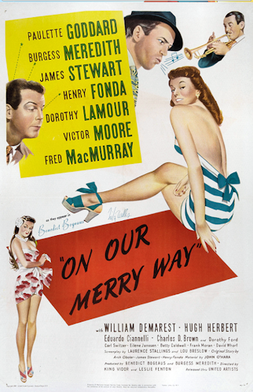
Alfred Damon Runyon was an American journalist and short-story writer.

Henry Jaynes Fonda was an American actor whose career spanned five decades on Broadway and in Hollywood. On screen and stage, he often portrayed characters that embodied an everyman image.

Guys and Dolls is a musical with music and lyrics by Frank Loesser and book by Jo Swerling and Abe Burrows. It is based on "The Idyll of Miss Sarah Brown" (1933) and "Blood Pressure", which are two short stories by Damon Runyon, and also borrows characters and plot elements from other Runyon stories, such as "Pick the Winner". The show premiered on Broadway in 1950, where it ran for 1,200 performances and won the Tony Award for Best Musical. The musical has had several Broadway and London revivals, as well as a 1955 film adaptation starring Frank Sinatra, Marlon Brando, Jean Simmons, and Vivian Blaine.

John Hodiak was an American actor who worked in radio, stage and film.

One Touch of Venus is a 1943 musical with music written by Kurt Weill, lyrics by Ogden Nash, and book by S. J. Perelman and Nash, based on the 1885 novella The Tinted Venus by Thomas Anstey Guthrie, and very loosely spoofing the Pygmalion myth. The show satirizes contemporary American suburban values, artistic fads and romantic and sexual mores. Weill had been in America for eight years by the time he wrote this musical, and his music, though retaining his early haunting power, had evolved into a very different Broadway style.

Yours, Mine and Ours is a 1968 American family comedy drama film directed by Melville Shavelson. The film stars Lucille Ball, Henry Fonda and Van Johnson.

Sam Levene was a Russian-American Broadway, films, radio, and television actor and director. In a career spanning over five decades, he appeared in over 50 comedy and drama theatrical stage productions. He also acted in over 50 films across the United States and abroad.

I Dream Too Much is a 1935 American romantic comedy film directed by John Cromwell. It stars Henry Fonda and Lily Pons, as well as Lucille Ball in an early supporting role. It has been described as a "somewhat wispy operetta." Songs are by Jerome Kern and Dorothy Fields. The film was nominated for an Academy Award in the category Sound Recording.
Leonard Spigelgass was an American film producer and screenwriter.

Daisy Kenyon is a 1947 American romantic-drama film by 20th Century Fox starring Joan Crawford, Henry Fonda, and Dana Andrews in a story about a post-World War II romantic triangle. The screenplay by David Hertz was based upon a 1945 novel of the same name by Elizabeth Janeway. The film was directed and produced by Otto Preminger. Having opened to restrained reception, Daisy Kenyon has seen reappraisal, and now enjoys a minor cult following for its realistic treatment of a typically melodramatic plot.

Marion Suplee, known professionally as Marion Martin, was an American film and stage actress.

Guys and Dolls is a 1955 American musical film starring Marlon Brando, Jean Simmons, Frank Sinatra, and Vivian Blaine. The picture was made by Samuel Goldwyn Productions and distributed by Metro-Goldwyn-Mayer (MGM). It was directed by Joseph L. Mankiewicz, who also wrote the screenplay. The film is based on the 1950 Broadway musical by composer and lyricist Frank Loesser, with a book by Jo Swerling and Abe Burrows, which, in turn, was loosely based on "The Idyll of Miss Sarah Brown" (1933) and "Blood Pressure", two short stories by Damon Runyon. Dances were choreographed by Michael Kidd, who had staged the dances for the Broadway production.

Best Foot Forward is a 1943 American musical film adapted from the 1941 Broadway musical comedy of the same title. The film was released by Metro-Goldwyn-Mayer, directed by Edward Buzzell, and starred Lucille Ball, William Gaxton, Virginia Weidler, Chill Wills, June Allyson, Gloria DeHaven, and Nancy Walker.

Sorrowful Jones, also known as Damon Runyon's Sorrowful Jones, is a 1949 American comedy-drama film directed by Sidney Lanfield. The film stars Lucille Ball and Bob Hope.

Mame is a 1974 Technicolor musical film in Panavision based on the 1966 Broadway musical of the same name and the 1955 novel Auntie Mame by Patrick Dennis.

The Mad Miss Manton is a 1938 American screwball comedy-mystery film directed by Leigh Jason and starring Barbara Stanwyck as fun-loving socialite Melsa Manton and Henry Fonda as newspaper editor Peter Ames. Melsa and her debutante friends hunt for a murderer while eating bonbons, flirting with Ames, and otherwise behaving like irresponsible socialites. Ames is also after the murderer, as well as Melsa's hand in marriage.

On Our Merry Way is a 1948 American comedy film produced by Benedict Bogeaus and Burgess Meredith and released by United Artists. At the time of its release, King Vidor and Leslie Fenton were credited with its direction, although the DVD lists John Huston and George Stevens, who assisted with one of the segments, as well. The screenplay by Laurence Stallings and Lou Breslow, based on an original story by Arch Oboler, is similar in style to that of Tales of Manhattan (1942), another anthology film made up of several vignettes linked by a single theme. The picture stars Paulette Goddard, Burgess Meredith, James Stewart, Henry Fonda, Harry James, Dorothy Lamour, Victor Moore and Fred MacMurray. It marks the first joint movie appearance of Stewart and Fonda, who play a pair of musicians in their section of the film.

Meet the People (1944) is a Metro-Goldwyn-Mayer musical comedy film made, and set, during World War II, and starring Lucille Ball and Dick Powell and featuring Virginia O'Brien, Bert Lahr, Rags Ragland and June Allyson. The film takes its title from a successful Los Angeles musical revue, which ran on Broadway from December 25, 1940 to May 10, 1941. Vaughn Monroe and his orchestra, Spike Jones and his City Slickers, and Virginia O'Brien were also in the original stage cast. O'Brien sings the hit song "Say That We're Sweethearts Again".

Lucille Désirée Ball was an American actress and comedienne. She was nominated for 13 Primetime Emmy Awards, winning five times, and was the recipient of several other accolades, such as the Golden Globe Cecil B. DeMille Award and two stars on the Hollywood Walk of Fame. She earned many honors, including the Women in Film Crystal Award, an induction into the Television Hall of Fame, a Kennedy Center Honor, and the Governors Award from the Academy of Television Arts & Sciences.

Broadway Through a Keyhole, also billed as Broadway Thru a Keyhole, is a 1933 American pre-Code musical film produced by Twentieth Century Pictures and released by United Artists.



















